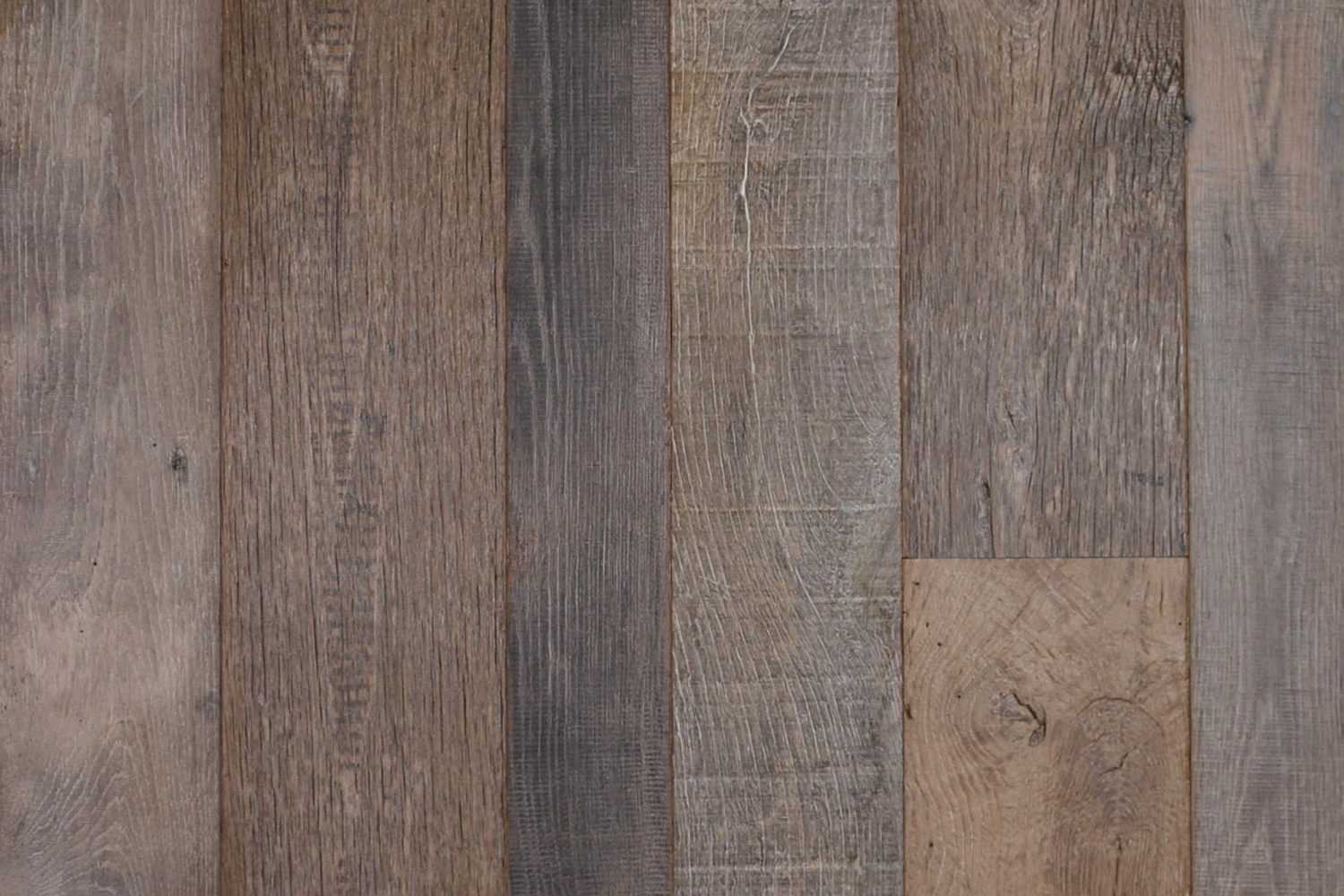Reclaimed engineered wood flooring has emerged as a sustainable and aesthetically pleasing alternative to traditional hardwood floors in recent years. With its unique blend of environmental consciousness and engineering ingenuity, this flooring option has gained popularity among homeowners and designers alike. But what exactly goes into creating reclaimed engineered wood flooring, and how does it work? This article explores the details behind this innovative flooring solution.

Understanding Reclaimed Engineered Wood Flooring
Before we explore the crafting process, it’s essential to understand what reclaimed engineered wood flooring is and where its significance lies. Unlike solid hardwood flooring, which is made from a single piece of wood, engineered wood comprises multiple layers that are bonded together. These layers typically include a hardwood veneer surface layer and several layers of emission friendly (EC1) birch plywood. This construction enhances stability and minimises the risk of warping or cupping, making engineered wood suitable for various environments, including those prone to moisture fluctuations.
Reclaimed engineered wood flooring takes this concept further by incorporating reclaimed or recycled wood for its surface layer. This reclaimed wood, sourced from various origins such as old barns, industrial buildings, or wine barrels, adds character and history to the flooring while reducing the demand for newly harvested timber. By repurposing wood that would otherwise end up in landfills, reclaimed engineered wood flooring embodies sustainability and environmental responsibility.
The Crafting Process
Crafting reclaimed engineered wood flooring involves several meticulous steps, each crucial to achieving the desired quality and appearance:
1. Sourcing Reclaimed Wood
The process begins with sourcing reclaimed wood from different sources. This wood undergoes thorough inspection and testing to ensure its quality and suitability for flooring. Imperfections such as knots, nail holes, and weathering are embraced as part of the wood’s charm and character.
2. Deconstruction and Preparation
Once sourced, the reclaimed wood undergoes a meticulous deconstruction process. The process involves removing any nails, metal fasteners, or contaminants that may compromise the integrity of the flooring. The wood is then cleaned, de-nailed, and carefully inspected for defects.
3. Milling and Resurfacing
Next, the reclaimed wood is milled and resurfaced to achieve uniformity and smoothness. This process involves cutting the wood into precise dimensions and sanding it to remove any surface imperfections or roughness. The goal is to create a consistent surface for the veneer layer of the engineered wood flooring.
4. Layering and Bonding
Once the reclaimed wood is prepared, it is layered onto the core material and other engineered wood layers. These layers are carefully bonded using high-pressure adhesives and heat, creating a strong and durable composite structure. The top layer, made from reclaimed wood, provides the flooring with its distinctive appearance and character.
5. Finishing and Quality Control
After bonding, the engineered wood planks undergo finishing treatments such as staining, sealing, or coating to enhance their durability and aesthetics. Each plank is rigorously inspected for quality, ensuring that only the finest pieces make it to the final product.
Advantages of Reclaimed Engineered Wood Flooring
Reclaimed engineered wood flooring offers several advantages over traditional hardwood flooring, including:
- Sustainability: This flooring option uses reclaimed wood, reducing the need for new timber extraction and contributing to environmental conservation and sustainability efforts.
- Durability: The engineered construction enhances stability and resistance to moisture, reducing the risk of warping, cupping, or shrinking.
- Character and Authenticity: The unique markings, patina, and history of reclaimed wood lend a distinct character and authenticity to each plank, adding warmth and charm to any space.
The Main Company: Crafting Reclaimed Engineered Flooring
The Main Company is a beacon of excellence in crafting reclaimed engineered flooring. With over 40 years of experience, we specialise in transforming reclaimed wood into stunning flooring options that blend sustainability with unmatched quality. The Main Company works to your specifications, using state-of-the-art-machinery and an on site kiln to provide the highest quality reclaimed flooring that will stand the test of time. Most of the reclaimed wood is engineered; lamellas are cut from the old oak and cold pressed to sustainable and emission friendly (EC1) birch plywood. From old textile mills to historic landmarks, each piece of wood tells a unique story, meticulously handcrafted and restored to preserve its natural beauty.
The Main Company’s commitment to sustainability extends beyond sourcing reclaimed wood; our state-of-the-art engineering processes ensure durability and stability, making our flooring suitable for both residential and commercial spaces. With a wide range of finishes and customisation options, The Main Company’s reclaimed engineered flooring adds character and charm to any environment, making it a timeless and environmentally conscious choice for discerning homeowners and designers alike.
If you’re interested in exploring reclaimed engineered wood flooring samples to see the unique character and charm they offer, visit this page for a closer look.
